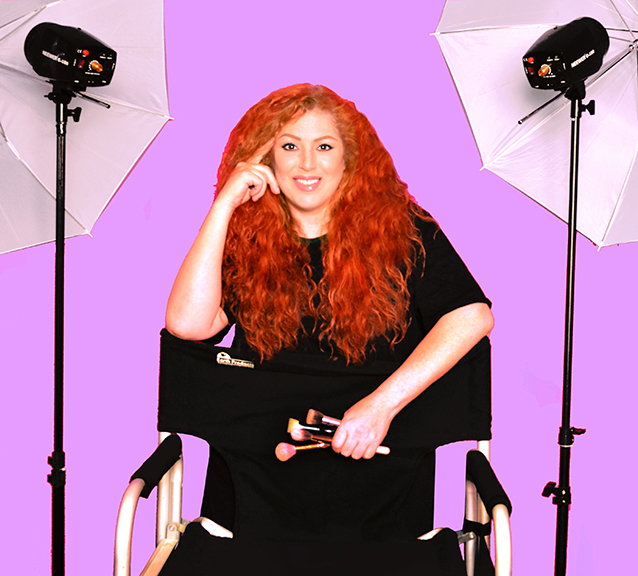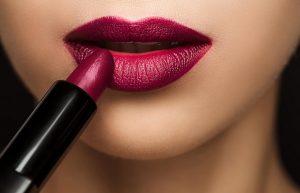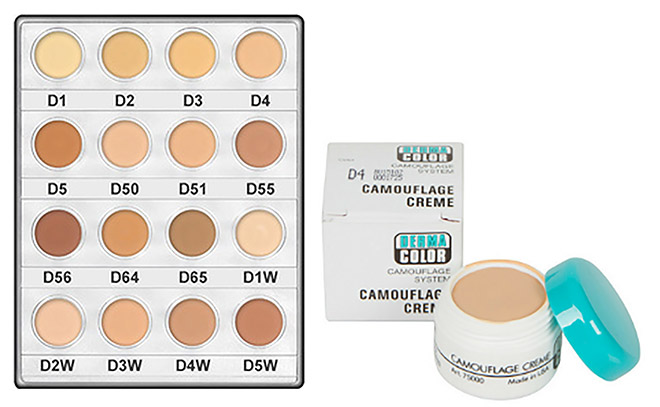The Beard-Cover Controversy: Setting the Record Straight
In my many years of providing makeup service to transgender women, crossdressers, and Drag Queens, I have experienced a great number of incidences that required me to argue about assorted beard-covering techniques, and believe me, I have heard them all. Many years ago, I often frequented a certain forum for crossdressers to give makeup advice, and this was the topic that got me into the most trouble. The reason for that is simple: some people are set in their ways and do not like to be challenged or corrected whenever a “new” method is introduced. In the case of materials used for blocking beard shadow, I found it odd that so many people were still using the age-old “orange lipstick” method when newer and more effective methods were getting better results. Hence, the controversy.
The argument is always the same: “. . .I’ve been doing it this way for yeeeears” and “it’s always worked for me.” Are you sure about that? I’ll share a true story about something that actually happened. One of the girls who fought me tooth and nail about this agreed to come to my studio and conduct a little experiment. She was a local girl who came down once a month to a T-friendly nightclub called “Club Shine” in Los Angeles’s San Fernando Valley. The “experiment” went like this: I would apply my method on half of her face, she would do the other half, and we would compare them at the end of the night. Both looked perfect when we walked out the door together at about 10: PM. Several of my girls were with us and can attest to what happened next. After a few hours of dancing and drinking, her half was clearly (glaringly, actually) obvious. It had become completely orange, while my side was still flawless. Why did that happen, you ask?
Lipstick is made of petroleum, which is one of the main (if not the main) ingredients in most makeup removers. We use oily products to remove makeup. If you’ve placed a near-pure petroleum product on your face, and then placed another makeup product on top of it, the petroleum product will break down the makeup that lays on top. It won’t happen right away, but it will happen. Over a couple hours, the foundation will begin to break down, leaving only the orange lipstick in its place. In her case, only half of her mustache/beard area was orange, and she was so embarrassed that she actually left the club. Before she left, she was very upset that nobody had ever mentioned her orange “mug” to her before, and that she had gone out like this so many times without anyone saying a word to her.
In her defense, and the many others who defend this method to the death, they are only half wrong. It’s not the “orange” part of the process that isn’t good, it’s the lipstick part. Lipstick is not just made with petroleum; it’s made with a very specific type of petroleum that is processed in a way that keeps it oily and fluid. It’s supposed to provide continued shine and “pliability” to the moving parts that are your lips and it is not meant to have anything else placed on top of it (except other petro-based products). Another example would be if you were to kiss another girl’s cheek (while you were wearing lipstick and she was wearing foundation) and she then wiped your lipstick off her cheek, her foundation would also be removed. This is why girls don’t like it when other girls kiss them on the cheek while wearing lipstick! It must also be said that not all lipsticks are petroleum based. Some of the higher-end brands (like MAC) are glycerin-based but will have the same effect because glycerin is just another type of oil/fat used in cosmetics and skin care products as a moisturizer or emollient. However, the glycerin used in lip products will be in higher amounts than other products because it is meant to go on lips (with nothing on top of it).
The controversy doesn’t end there either, unfortunately. Other products frequently used as a beard-cover can cause a different set of problems, such as water-based liquid concealers. You know the kind; they come in a tube with a little sponge-wand applicator similar to lip gloss. These water-based concealers are fine most of the time, except when they’re relied on for something so important. If they are used with a silicone-based foundation (like the stay-on kind), they will clash. If they are used with an oil-based foundation (like the stick or solid/creme kind), they will clash. What do I mean by “clash,” anyway? It means that they will either “separate,” or one will weaken the other. Either way, at least one part of your makeup is going to fail to do its job and your gloriously gray/blue beard shadow will come shining through!
So besides studying chemistry, what’s a girl to do?
Well, you may have to switch up a couple of things, but I suggest you start by reading your foundation’s label to find out if it’s compatible with your existing beard-cover product. Long-wear foundations are almost always silicone-based, so those ones will be easy to confirm by checking the label for words ending in “-cone, -methicone, or -siloxane” as the second or third ingredient. If you’re struggling to get great coverage, or if your great coverage seems to “fade away” over a couple of hours, you might need to change brands or types. It’s a lot easier to switch foundations than it is to switch beard-cover products, especially if you’ve found one that actually works. You could also consult with a professional makeup artist who has done the “procedure” thousands of times, successfully, and ask her what she uses (wink, wink).
I use a product made by Kryolan called “DermaColor Camouflage Crème,” which is an oil-based (NOTE: just because a product is oil-based does not mean it is oily!), concentrated foundation (that’s used as a strong concealer), and I only use it with silicone-based foundations. I do this because the incidence for “conflict” is extremely low. While silicone is not technically an oil (it’s a polymer) per se, it is “oil-like” in its behavior in that it repels water, protects the skin’s moisture barrier, and it will not “conflict” with an oil-based concealer (which is the beard cover). All that aside, the stuff works. If applied correctly, it will last until it’s removed. Another convenient factor about this product is that it does not need to exactly match your skin tone because it will be covered by foundation anyway. IF your beard shadow is blue-ish or green-ish in color, then you may use an orange-ish shade to cover. Otherwise, just use a flesh shade. A specific method must be followed, and besides careful application, it’s very important to use a compatible, full-coverage foundation with it. Beard covering must be thought of as a two-factor process: careful application of a very opaque “concealer” underneath a very opaque foundation. They must be used together since one is simply ineffective without the other.
- Begin the process by thoroughly cleansing the area with an astringent or a toner (depending on your skin type) using a cotton pad.
- DO NOT APPLY A PRIMER IN THIS AREA. You may use a primer everywhere else on the face and neck, but please skip the mustache/beard area or areas you will be applying the beard cover. Primers can inhibit the material from locking into the pores, which is what you want.
- Remove a small bit of the beard cover material from its container with a clean implement, such as a dental spatula, plastic butter-knife, brush handle, etc. DO NOT USE YOUR FINGERS TO REMOVE PRODUCT FROM THE CONTAINER. We do not want to promote bacterial/microbial growth in our expensive products!
- Place a pea-sized amount (or half-a-pea if only doing mustache and chin) of the material onto a surface, such as a makeup palette, single bathroom/kitchen tile, a CD cover, etc., or the back of your opposing hand.
- With your fingertip, soften the material by dab-dab-dabbing it until it warms up and becomes creamy. Make sure you don’t have too much of it on your fingertip. Look at your fingertip: can you see your fingerprint? If you cannot see your fingerprint, then touch down onto a clean part of the tile to remove some of it.
- Dab the material onto the areas with the most visible shadow only. Continue to cover these areas WITHOUT BLENDING until all of those areas are covered. You are simply “dotting” it on for now. Add more in thinner areas until it is an even layer throughout.
- Begin blending by pressing the material into the skin and pores. PRESS it in while gently blending to smooth out any obvious edges.
- Having too much material on your fingertip will make blending very difficult since it will have “nowhere to go.” The goal is to create an opaque and even layer of the material that only covers the darkest areas, and too much of it will cause you to spread it out onto areas that don’t need it. Streamline!
- Once you’ve achieved an opaque and even layer, then you may set it with powder (I use loose powder only). USE A POWDER PUFF AND NOT A BRUSH for this. You need to really press the powder down into the pores with pressure, and a brush will only distribute the powder onto the surface and disturb its placement. A powder brush is not effective here. You may use a setting spray in addition to the powder, but not in place of.
- Once it is set with powder, take a close look at your work. Can you still see a little bit of the shadow? If so, then apply another thin layer and powder again. If you cannot, then you may continue to the next step.
- Apply your foundation with a sponge (I use a “Beauty Blender”) in this area so as not to disturb the beard cover material. If you already use a sponge for foundation, then simply apply your foundation the way you normally do. If you do not use a sponge for foundation, then you must use a sponge in the beard area and finish the rest of the application with your method of choice. The goal is to lay down a nice, even layer of foundation over the beard area and blend it all into one cohesive layer. Wait 3-5 minutes for everything to dry before you powder.
- Powder and continue with the rest of your makeup routine! I know all of this sounds like a lot, only because it is so “spelled out,” but I promise you that it’s only a 2-minute process once you get into the flow of it.
NOTES: You may be tempted to try to substitute other products with DermaColor, but I cannot guarantee good results if you do this. The only other product that will even come close to the opacity of the DermaColor formula is Kryolan’s TV Paint Stick (same company). You may achieve similar results if you scrape some out of the stick and apply it in the same way. And yes, you may use orange. ?
Gina “Jet” Ortiz is the owner and founder of Transitions Makeup and Photo in Los Angeles since 2000. She is a professionally trained makeup artist and instructor, as well as a photographer, for the Transgender and Bi-Gender communities. She holds a diploma from the Westmore Academy of Cosmetic Arts in Makeup for Motion Pictures and Television, specializing in Gender Illusion, as well as an Associate of Science/Pre-Medical from Los Angeles Valley College.
Visit Transitions Makeup and Photo here: http://www.TgTransitions.com
Questions about this article? Email Gina Jet here: [email protected]
Category: crossdressing, Makeup, Transgender How To






